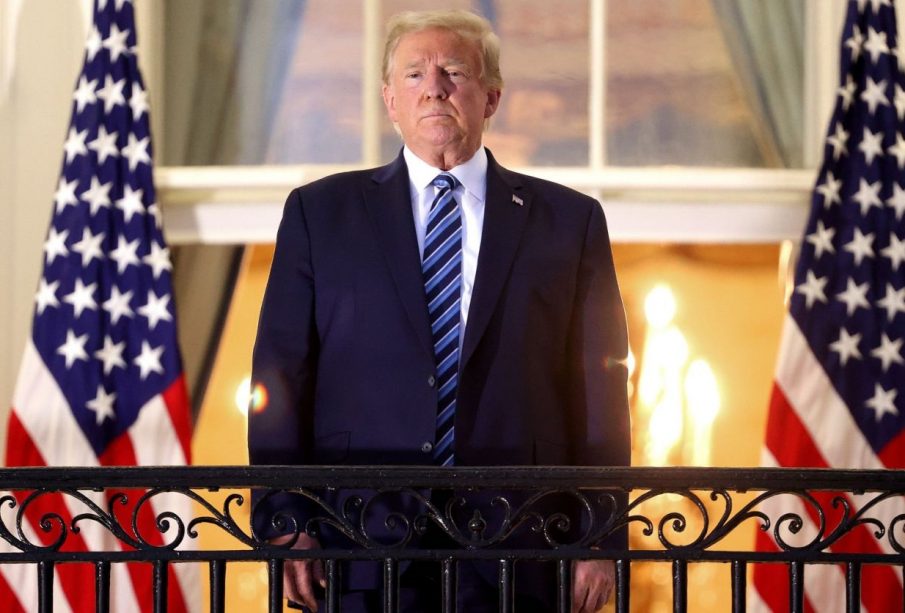US Stock Futures Rise And The Dollar Eases after Trump Signals He May Back Piecemeal Stimulus

- United States futures rose, along with the decline in the dollar, after President Donald Trump signified he might be open to piecemeal stimulus.
- Technology and industrial stocks gained, in addition to energy futures, as financier threat cravings improved.
- Treasury yields held constant ahead of weekly jobless claims.
- Go to Company Expert’s homepage for more stories.
US stock futures increased dramatically on Thursday, pointing at an extension to the strongest everyday rally in 3 months after President Donald Trump signaled he is open to piecemeal stimulus, rather than a single package, sustaining investor optimism that a deal might be quicker in the offing.
Futures on the S&P 500, the Nasdaq 100, and the Dow Jones rose in between 0.6-0.8%, lifted in part by a weaker dollar, which came under pressure from investors relying on more risk-linked possessions, such as innovation stocks, industrials, and emerging-market currencies.
In a tweet on Wednesday, Trump prompted Democrats and Republicans to team up to press for a $25 billion lifeline for the airline company sector, after having left the door open the previous day to send out $1,200 payments to people. This sent out the Dow Jones up by around 530 points in its largest one-day gain in 12 weeks.
“Once once again it has been changing expectations of United States stimulus that have driven markets, with Wednesday’s rally coming off the back of a softened tone from the president that pointed towards the capacity for a smaller sized, but possibly more targeted, relief program,” IG Group analysts said in an early morning note.
The dollar index held constant around 93.62, as losses in the US currency versus the pound, which rose 0.4% were offset by gains in the Canadian dollar and the Japanese yen, which relieved 0.1% versus the greenback. The Korean won and the Mexican peso was the standout emerging-market gainers, up 0.4% and 0.3%, respectively.
European indices traded higher, following on from a broad-based rise on Asian markets overnight, that lifted the Nikkei by nearly 1%, and both the Taiwan weighted index and the S&P/ ASX 20 by 1.1%.

Pause Ad 00:01 – up next “Australia’s financial obligation to GDP ratio is dealing with ‘drawback pressure’: Fitch Ratings” Packed: 100.00% Unmute 0 Australia’s debt to GDP ratio is facing ‘downside pressure’: Fitch Scores
Madrid’s IBEX 35, in some cases considered as being somewhat greater risk than bigger indices such as the FTSE 100 or the DAX, was the top carrying out criteria in Europe, rising 1.4% on the day to exceed the Stoxx 600, which acquired 0.6%. German mid-caps, which rose 1%, hit a one-month high.
The FTSE 100 was one of a couple of criteria at a loss, down 0.1%, after spending plan airline EasyJet warned it faces its first-ever annual loss this year, removing 2% off the share rate, making it among a couple of travel stocks to fall in Europe.
Amongst the commodities complex, London Gasoil futures– a proxy for the need for diesel, which broadly includes the similarity heating oil and jet fuel – increased 2.5%, while Brent and WTI unrefined futures got around 1%, after a decline in United States business inventories and as Typhoon Delta shuttered around 30% of production capacity.
Brent crude was last around $42.46 a barrel, while WTI was at $40.36 a barrel. Both contracts have gained around 4% recently. But, with cases of COVID-19 on the increase, the possibility for continual gains throughout the energy complex seemed relatively dim, according to AxiTrader chief strategist Stephen Innes.
“Hints of any renewed drop in need –– practically driven by Covid issues– continue to send out worry throughout the markets,” Innes stated in an everyday note.
Deutsche Bank experts said in a note that cases of COVID-19 are now rising at their fastest rate of the pandemic at over 12,800 each day usually over the last 7 days.
Gold increased 0.3% to around $1,895 an ounce, helped in part by a weaker dollar and steadier Treasury yields, but likewise as financiers did some bargain-hunting after having driven the price to its lowest in nearly two weeks the previous days.
Minutes from the Federal Reserve’s conference in September revealed policymakers were divided last month in how to implement the central bank’s brand-new approach to targeting inflation, having been unanimous the previous month.
On the data front, traders were awaiting the weekly United States out of work claims, which are expected to reveal ongoing claims stayed stubbornly above 10 million in the week to September 26. The number of individuals that continue to claim welfare has more than cut in half because of the highs seen in May.






